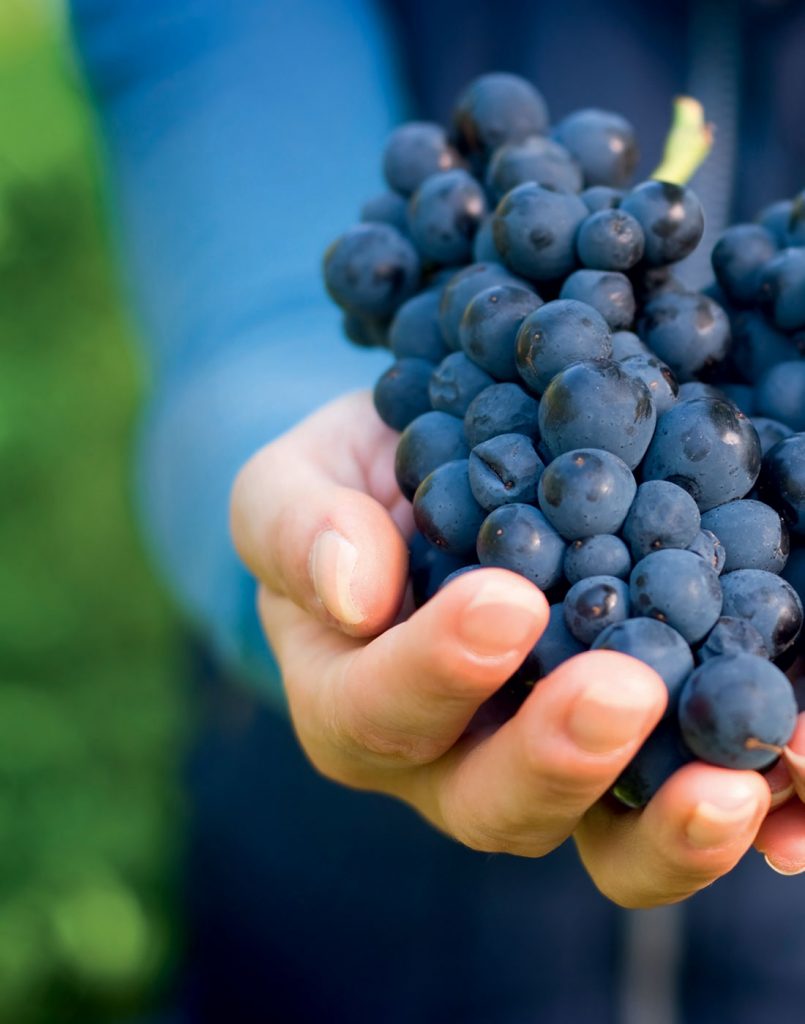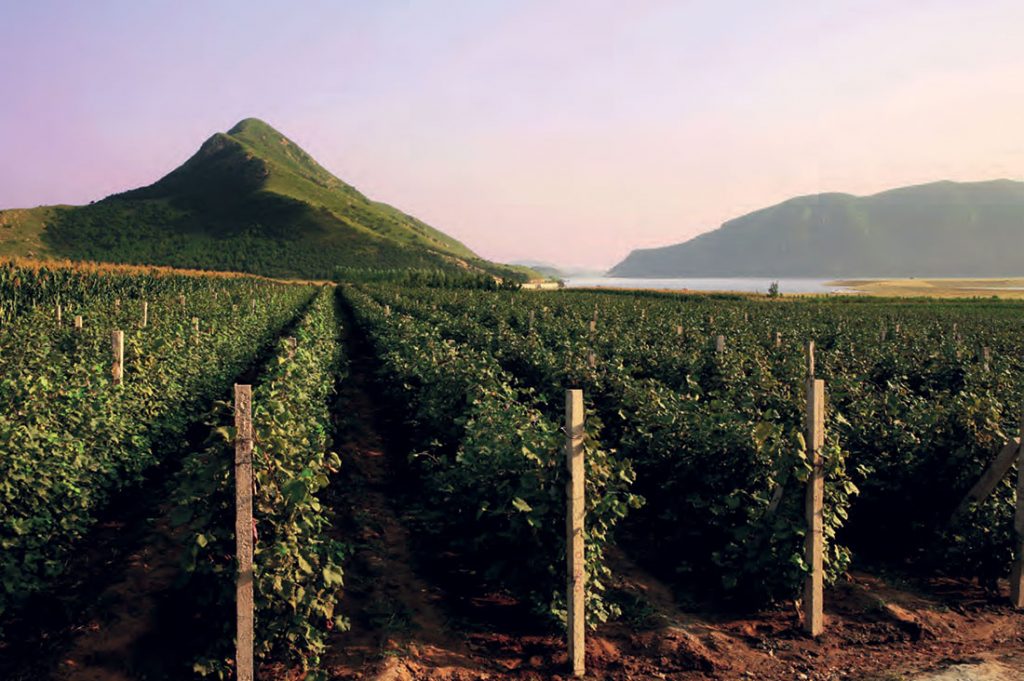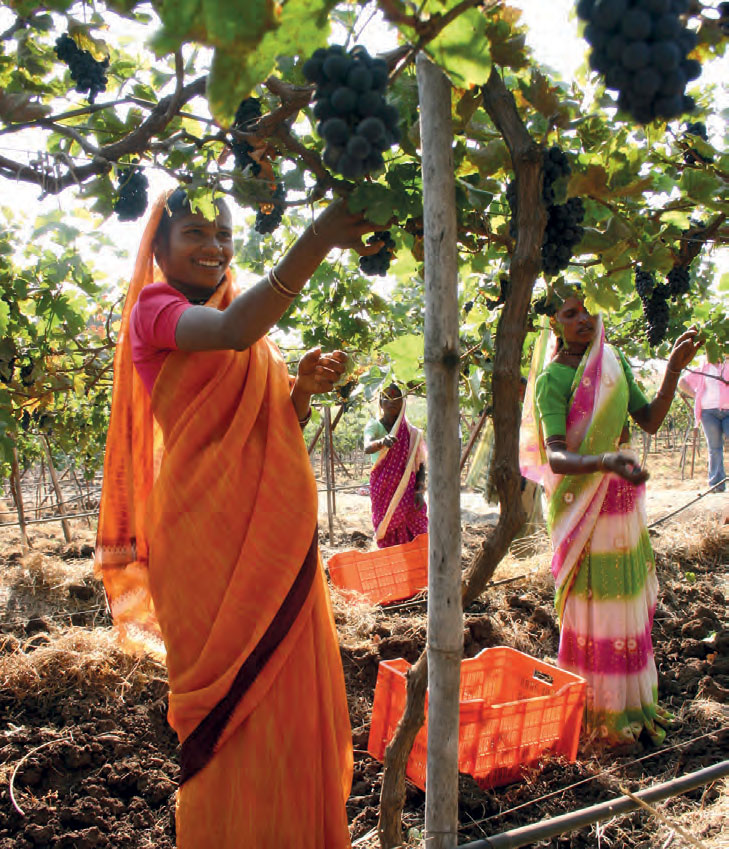
As wine appreciation continues on its global upward trend, China and India are taking their places among the world’s players. They may be the oldest historical civilisations in the world but for China and India, the motivation to be a global wine-producing country has not been a top priority. But in recent years, as business – and business entertaining – has grown, so too has been the realisation that wine is the drink of choice globally and certainly makes good business sense.
And where at one time, only Western restaurants carried wine lists, today any fi ne dining restaurant worth its salt, from Beijing, Shanghai and Hong Kong, to Mumbai, New Delhi and Bangalore, boast impressive wine lists that include home-grown names.
And while it may have been a common sight to see people in China drinking wine with coke a decade ago, today such sights are rare. Against four wine importers in China in 2001, there are now an estimated 20,000, with most of them being one-man shows. Whereas expats were the key drinkers 10 years ago, today Chinese and Indians are taking a keen interest in wine appreciation with demand for wine education exploding.
Wine and beverage consultant Keith Edgar said in an interview with The Wine Club: “There are a lot of parallels between India and China in regards to the development of the wine business. When I was in China 15 years ago, the same things were being said then that are being said now about the Asian wine business which is, ‘Oh you will never settle down with wine. It’s just not possible’. We now know that it cannot be true.
“There were also similar amounts of consumption happening at the same time. I feel that the growth of wines in India will exceed the growth of wines in China because India already has a much larger, more sophisticated middle class than China had at that time so the consumers are all over here. What they are lacking is opportunity, education about wine and pricing to become better.”
International gold medal

But China’s Jia BeiLan, a tiny winery in China’s northern Ningxia province, made heads turn when it famously beat a host of French rivals in 2011 to collect an international gold medal for its Bordeaux-style Grand Reserve wine from 2009.
At the time, sceptics started a rumour that Jia BeiLan had substituted another vineyard’s wine for its own. However, its fan base continues to grow and respected wine critic Jancis Mary Robinson, OBE, has been quoted as describing the Grand Reserve 2009 as one of the two “most promising” wines she had tasted on a trip to the region.
Aspiring Chinese winemakers could also look to a small winery in China’s central Shanxi province for inspiration. In a corner of China better known for coal production, Grace Vineyard’s wines have attracted a mountain of local and international awards, among them five out of 18 Decanter World Wine Awards and Best Winery 2012 by the Chinese edition of wine bible La Revue du Vin de France. Very impressive for an operation that is less than 20 years old.
The vineyard has taken their game up several notches with wine tours and stylishly appointed accommodation. Having said this, however, high-quality Chinese wine is not going to flood your supermarket shelves anytime soon. China has a shortage of quality wine grapes,” explains Jim Boyce, a Beijing-based wine aficionado, who founded wine blog Grape Wall of China and also writes for several wine publications including Wine Business International and Food & Wine China. A lot of Chinese wine, he points out, contains low-end grapes that aren’t sweet enough to produce interesting wine flavours.
Areas in China that are dry enough to allow grape vines to grow without succumbing to mould and disease are also extremely cold in winter, he explains, forcing farmers to bury their vines to protect them from plummeting temperatures. That makes wines more expensive and shortens the life span of the plants. This apparently also applies to some extent in India. “Most people assume that China and India are so big, that there must be a place where grapes can thrive, but that’s not true,” says Boyce.
Top three
China’s three leading vineyards namely Great Wall, Dynasty and Changyu – reportedly own half of China’s domestic wine market, and Boyce believes that inevitable comparisons between the three are compelling them to raise their standards.
“Traditionally, Chinese wineries have sold wine based on nice labels, big commercials and sponsoring, and that all works,” he says. “But at a certain point, you’ll be judged on quality and you’ll be pushed by very inexpensive Italian, Spanish and Chilean wine coming into the market and you’ll be pushed to improve.”
Luxury labels are wagering millions on the belief that it is possible to produce top-notch wine on Chinese soil, even as critics continue to blame the country’s geography for the shortage of good wine grapes.
Domaines Barons de Rothschild, the owners of the famous French wine estate, Chateau Lafite, has teamed up with a Chinese corporation, CITIC, to establish a vineyard in southern China’s Yunnan province. Moet Hennessy, the wine and spirits wing of the French luxury giant, LVMH, is also in the ring. The group has staked out a large patch of land in the northern Ningxia region to produce the first Chinese wine made following French methods.
Vital transition in India

India’s homegrown wine industry sees a strong second wave of growth on the horizon. Industry leader Sula Wines, which added 250 acres of vineyards last year through contract farming, plans to add another 400 next year.
Damage to table grapes caused by unseasonal rain helped the wine industry increase production of port wine while the liquor ban in Kerala, which has already resulted in a three-fold increase in wine sales, is expected to give a major boost to the industry.
“In India, wine is consumed by one per cent of the population. But there lies the possibility for glorious opportunity if well handled, says Cecelia Oldne, global brand ambassador for Sula Wines, India’s leading wine producer, in an interview with Between The Wines website. “The Indian wine industry is evolving at a steady pace…making it one of the world’s most exciting wine markets looking to the future.”
Nashik in India’s Maharashtra state is also being recognised as a major wine producing region in India, she says. “As one of the youngest wine producing nations in the world, this is a major achievement for us,” she adds. Sula showcased some 10 labels last year, including the new sparkling Sula Brut, Chenin Blanc, Sauvignon Blanc and Dindori Shiraz. For Oldne, this represents an opportunity to tap new markets.
India’s expanding wine industry is in the midst of a vital transition. Production is hitting record levels and exports are rising hugely year on year. Couple this rapidly growing export sector with an expanding domestic consumer market and increasing industry support in the country’s major wine-producing states, and you have an industry with the certainty to become a global market player.
It’s tough to imagine that this will not be realised, especially since India has the optimum climate for grape cultivation and its main wine-producing states, Maharashtra and Karnataka, are growing world-class wine grapes.
Kapil Sekhri, director of the fast-growing Indian brand Fratelli Wines – which began with three wines in 2010 and was running 18 by 2014 – gives the big thumbs-up. He told Indian Hospitality Review: “Wine has become a lifestyle product. It is a healthier drinking option and is becoming culturally accepted in our country. It is a worldwide trend. With changing lifestyles and favourable government policies, I think 73% growth is achievable.”
Greater exposure to Western culture, global travel and experience of living in countries where drinking wine is part of daily life, are also helping to drive wine consumption in India. Sekhri talks about the shared inspiration of three families – the Sekhri brothers from New Delhi, the Secci brothers from Italy and the Mohite Patil brothers from Akluj in Maharashtra – behind launching Fratelli in India. Fratelli boasts the shortest crush time of grapes to preserve the freshness in wines. The fi rst vintage Fratelli Chenin Blanc 2010 won an award at the International Wine Challenge in London.
One of India’s oldest is Grover Vineyards, a family business founded in 1988 some 50km north of Bangalore. It has had its share of award-winning premium wines such as its La Reserve oak-matured Cabernet Sauvignon and Shiraz reds, and to up the ante, it merged with Nashik-based Vallée de Vin (producer of premium wine brand Zampa) in 2012. In one very strategic move, Grover Zampa became the second-largest Indian vintner after Sula.
The Indian wine scene continues to buzz with activity, with mergers, acquisitions and new entrants. As it has matured, it has entered the arena of wine tourism, off ering hospitality options, tours, tasting rooms and wine trails.
Once there were only Old World wines – then the doors began to open to New World ones. Wine is being made in many Asian countries, but perhaps none may hold the promise and potential of those coming out of two of the world’s most populous countries.
Alun Griffiths MW, former wine buying director of Berry Brothers & Rudd, an international wine and spirits merchant based in the UK, said in an interview with wine-searcher.com: “China and India have the potential to embrace wine in a big way and the economic muscle to dictate to producers what style of wine they should be making.”
China may be in wine infancy and India in its pre-teens when set against established global players, but transfer and sharing of technology and expertise in wine-making and viticulture with Europe and Australasia means they will reach maturity much faster than the Old World players did. And when they do, they will pose a serious challenge to the supremacy of the traditional wine-making countries.







